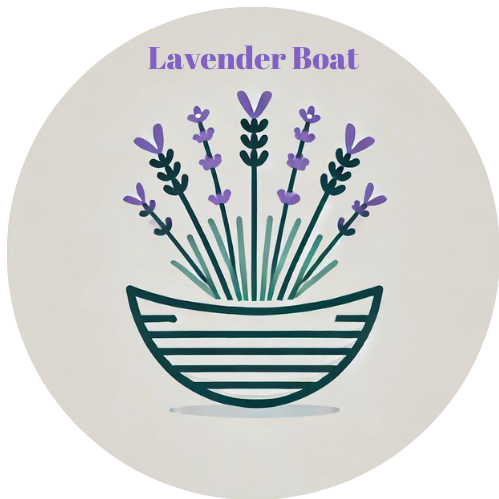Beyond common lavender species, we explore exotic species like Lavandula multifida, Lavandula stoechas, Lavandula pinnata, Lavandula pedunculata, Lavandula rotundifolia, Lavandula luisieri, and Lavandula heterophylla for unique traits.
Listen to the guide
or read on . .
Journey Beyond Common Lavender to Discover Rare Species
While English lavender may be the world’s most recognisable, over 400 lavender species exist far beyond this popular purple plant. Each variety offers unique growing habits, floral traits, and aromas for gardeners to discover. By seeking out exotic and uncommon lavender types, you’ll uncover enticing new options beyond the expected.
In this guide, we’ll highlight seven of the most intriguing and rare lavender species. Learn about their origins, physical attributes, and uses. From heat-tolerant Spanish lavender to wild lavenders of the Canary Islands, prepare to have your perception of this beloved herb expanded. Going beyond the ordinary not only increases horticultural knowledge – it often kindles a deeper appreciation for nature’s vast diversity waiting to be uncovered in your own backyard.
Let’s journey together to the exotic edges of lavender appreciation and find inspiration to grow something extraordinary. The magnificent, fragrant world of rare lavenders awaits your exploration.
Lavandula multifida
Also called fringed lavender, this exotic Spanish species stands out for its deeply cut, serrated leaf shape. The vivid green foliage provides an intriguing textural contrast with the bushy plant’s dense spikes of lilac-purple flowers. Lavandula multifida grows wild on the rocky slopes of the Canary Islands off North Africa.
Drought and heat tolerant, fringed lavender can thrive in challenging climates like USDA zones 7-10. The plants reach 2-3 feet tall and wide in a mounded form. Besides attractive leaves and blooms, fringed lavender gives off a fresh, herbaceous scent when brushed. Its pretty, rugged nature makes it ideal for rock gardens, borders, and containing slopes. Seek out this eye-catching, rugged lavender for your garden.
Lavandula stoechas
Another heat-loving Spanish lavender, Lavandula stoechas bears the common names French lavender and butterfly lavender. Compact mounds of green needle-like leaves are topped by vibrant flower spikes. Dark violet bracts that resemble butterfly wings sit atop the blooms. This unique feature provides exotic visual allure.
French lavender emits a strong camphorous, herbaceous fragrance instead of floral overtones. The essential oils are used in cleaning products. In landscaping, the 18–24-inch plants work nicely at the front of flower beds and in containers. Tolerating drought, poor soil, and humidity, this lavender variety thrives in challenging environments. Plant it where most flowers falter.
Lavandula pinnata
Hailing from the rugged Canary Islands, Lavandula pinnata offers textural drama with its large, velvety silver leaves akin to lamb’s ears. The foliage cascades in a trailing habit. Lavender-hued flowers appear in summer. Another common name for L. pinnata is fern leaf lavender due to its lush, fern-like appearance.

Given its native coastal climate, lavender pinnata makes an excellent container plant, tolerating heat and humidity. It shines cascading over walls and edges where its soft texture can be appreciated. The species reaches 1-3 feet tall and wide. Well-draining soil and plenty of sunshine help it to flourish. Its versatility combined with tropical appeal earns this lavender a spot in gardens and pots everywhere.
Lavandula pedunculata
This delicate lavender from southern Italy and Sardinia sets itself apart with a multitude of tiny, vivid purple-blue flowers packed on vivid green stalks. Referred to as Italian lavender, it forms a dense bushy shrub that blooms in late spring through summer. The foliage emits a fresh, herbaceous scent when crushed.
Given its Mediterranean origins, Italian lavender requires well-draining alkaline soil and full sun to thrive. It tolerates drought and heat once established. The petite size of 2 feet tall and wide suits container gardening. For people desiring a lavender that offers profuse blooms more than fragrance, this prolific flowering species is a perfect choice. Tuck it into borders or display it in stone planters.
Lavandula rotundifolia
Sometimes called rose lavender, this rare Spanish species flourishes in hot, humid environments. The round, blunt-tipped grey-green leaves differentiate it from typical lavenders. Short flower spikes bear soft pink blooms above the foliage. The entire plant reaches just 1-2 feet tall and wide, making it suitable for containers and smaller spaces.
Beyond the unique compact shape, rose lavender gives off a distinct scent described as fruity, musky, and resembling rosemary. The essential oils contain high amounts of camphor. Given its love of heat, this variety thrives in zones 8-11 and anywhere summers are sweltering. For lavender lovers seeking something petite and extraordinary, aromatic rose lavender is a perfect find.
Lavandula luisieri
Native to the remote Azores Islands off Portugal, Lavandula luisieri dazzles with dense clusters of rich violet blooms atop cascading stems. Also called St. Luis lavender, it displays a bold, playful habit, unlike tightly manicured varieties. The fragrance is mild and sweet with lemon undertones.
This rare island lavender prefers warm conditions, dry rocky soil, and plenty of sunlight. It thrives in zones 9-11. The cascading nature allows it to be trained into topiaries, grown on walls, or be used as a groundcover. St. Luis lavender’s vibrant blooms and trailing whimsy make it ideal for curb appeal. Seek it out to add a tropical, free-flowing element to your garden composition.
Lavandula heterophylla
This rare lavender inhabits only a few areas along the southern coast of Morocco. Extremely heat and drought hardy, Lavandula heterophylla bears grey-green leaves topped by deep violet flower heads. It spreads in a loose, informal habit and tolerates poor, sandy soil.
Also called Moroccan lavender, this rare species offers toughness along with sensory beauty. The plants reach 2-3 feet tall and wide in maturity. Their loose sprawling nature suits rock gardens and cascades over walls and slopes. The woodsy, herbaceous essential oil contains high percentages of camphor. For hot, challenging environments, look to resilient Moroccan lavender to bring its exotic desert beauty.
Where to Source Rare Varieties
The exotic lavenders described may not be found at your average nursery. Here are some tips for sourcing unusual lavender plants:

– Check with local lavender farms or speciality growers to see if they offer rare species.
– Search for vendors of Mediterranean plants who understand optimal growing conditions.
– Join lavender enthusiast groups and ask members about leads on exotic varieties.
– Look for businesses specialising in lavender that ship live plants and seeds.
– Consider growing from seed, being patient as germination can be slow.
– Research if a species can be successfully started from cuttings instead of seed.
– Be willing to pay higher prices for speciality, imported plants. The establishment is difficult.
Intuitive exotic lavenders can be grown successfully at home with persistence and care.
Final thoughts
Some of nature’s most alluring secrets lie in quiet, rugged coastal regions and distant islands forgotten by time. The rare lavenders that call such environments home prove fascinating diversity beyond the familiar flowers that perfume so many products today. Seeking out the unusual requires curiosity and patience. Yet connecting with exotic species’ origins kindles a deep appreciation for uniqueness, beauty, and the fiery persistence needed to flourish in harsh conditions.
Bringing a touch of this fierce splendour into your own garden through an exotic lavender variety weaves more vibrant threads into the tapestry of domestic life too often confined to routine. Much fulfilment can arise in nurturing the extraordinary. Soon, passersby may chance to notice your unusual lavenders and ponder their own next daring move into uncharted horticultural delight. All from a simple act of appreciating the overlooked and rare.






